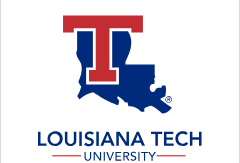Document Type
Poster Presentation
Loading...
Location
Online
Description
Human adipose-derived stem cells (hASCs) are an easily accessible type of multipotent stem cell that boasts immense potential as a cell source for personalized regenerative medicine. Given their tremendous clinical potential, our research strives to better understand hASCs and their potential use in combating degenerative bone diseases such as osteoporosis and trauma related degradation. We are specifically interested in deciphering the role of the highly conserved Notch signaling pathway and how it might be manipulated to enhance bone differentiation and regeneration.
The Notch signaling pathway is a cell-to-cell contact dependent pathway that is involved in cellular homeostasis, stem cell differentiation, and cell fate determination. Notch1 and Notch3 are two receptors in the Notch signaling pathway that play a critical role in osteogenesis and self-renewal. To better understand the role of these two receptors, siRNA knockdowns are performed. Small interfering RNAs lead to the degradation of a significant amount of a targeted mRNA transcript, and in turn results in a significant decrease in protein expression. The literature indicates that a decrease in Notch1 expression leads to a decrease in osteogenic differentiation. Given data in the literature for other types of cells, we expect to confirm that the decrease in Notch1 leads to a decrease in hASC osteogenesis while the decrease in Notch3 may lead to enhanced differentiation. Identifying the role of each receptor will aid in identifying potential therapeutic targets for treating bone degeneration and loss in the future.
Recommended Citation
Adams, Summer; Norris, Lucas; Cart, John Bradley; and Newman, Jamie, "03. Notch Signaling Plays a Key Role in Regulating Adult Stem Cell Osteogenic Differentiation" (2021). Undergraduate Research Symposium. 7.
https://digitalcommons.latech.edu/undergraduate-research-symposium/2021/poster-presentations/7
Adams, Norris Poster - Summer Adams.pdf (1253 kB)
03. Notch Signaling Plays a Key Role in Regulating Adult Stem Cell Osteogenic Differentiation
Online
Human adipose-derived stem cells (hASCs) are an easily accessible type of multipotent stem cell that boasts immense potential as a cell source for personalized regenerative medicine. Given their tremendous clinical potential, our research strives to better understand hASCs and their potential use in combating degenerative bone diseases such as osteoporosis and trauma related degradation. We are specifically interested in deciphering the role of the highly conserved Notch signaling pathway and how it might be manipulated to enhance bone differentiation and regeneration.
The Notch signaling pathway is a cell-to-cell contact dependent pathway that is involved in cellular homeostasis, stem cell differentiation, and cell fate determination. Notch1 and Notch3 are two receptors in the Notch signaling pathway that play a critical role in osteogenesis and self-renewal. To better understand the role of these two receptors, siRNA knockdowns are performed. Small interfering RNAs lead to the degradation of a significant amount of a targeted mRNA transcript, and in turn results in a significant decrease in protein expression. The literature indicates that a decrease in Notch1 expression leads to a decrease in osteogenic differentiation. Given data in the literature for other types of cells, we expect to confirm that the decrease in Notch1 leads to a decrease in hASC osteogenesis while the decrease in Notch3 may lead to enhanced differentiation. Identifying the role of each receptor will aid in identifying potential therapeutic targets for treating bone degeneration and loss in the future.

